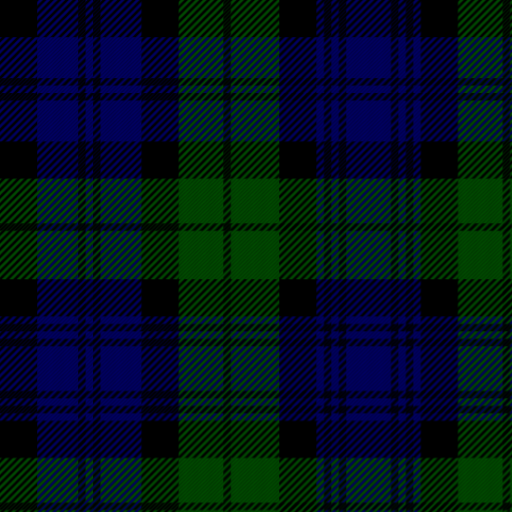Nope.
Just to be clear, nowadays tartan is a pattern, originally a fabric design, where lines of different colours meet each other at right angles. The pattern of weaving means there's often a diagonal element to the thicker stripes.

tartan montage by User:Celtus
In the USA and elsewhere, tartan is often called plaid, but in Scotland a plaid is basically a blanket. The man here:

is wearing a tartan plaid over his shoulder.
The first tartan patterns were probably made in what is now Austria in the 6th century BC, but tartan is now most strongly associated with Scotland.
The story of tartan is the story of war, technology and fashion. To begin with, a particular tartan pattern would be associated with a district, and not with a particular name or family: the colour of the tartan was simply the colour of the obtainable locally-sourced dyes.
In 1746, as a result of a rebellion by tartan-wearing Scots, the wearing of tartan was outlawed for a couple of generations, and when it was allowed again it was no longer viewed as ordinary Highland dress but as a symbol of nationality.
Soon a combination of bright synthetic dyes and a desire for both romance and order (the Victorians loved classifying things) gave rise to the idea of family tartans. There are now thousands of them, often available in modern, weathered, ancient and muted versions, depending upon how bright you like your tartan (as I've already said, modern dyes are much brighter than ancient ones).
Some tartans are known the world over, like this Burberry one:

and that particular one is actually legally copyrighted. But very nearly all other tartans are free for anyone to wear.
You might spot a tartan on a school uniform, a soldier's uniform, a bow tie, a pencil, a mug, a carpet, a scarf, or the lining of a coat.
Extra points if you know what that particular tartan is called.

Black Watch tartan, photo by Wgabrie

Royal Stewart tartan. Photo by MyNikki
Spot the Frippet: tartan. This word might come from the Old French tartaine, from the Old Spanish tiritar, to rustle (tartan is usually made of wool, now, but then it was silk). On the other hand there's a French word tartarin which means Tartar cloth, and a Gaelic word tarsainn which means across. (Mind you, the earliest Scottish cloths called tartans sometimes had no pattern to them at all.)
A tartan is also sort of old sailing boat. This word is thought to come from the Provençal tartana, falcon, because boats were often called after birds.
No comments:
Post a Comment
All comments are very welcome, but please make them suitable for The Word Den's family audience.